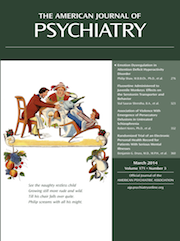When Affective Disorders Were Considered to Emanate From the Heart: The Ebers Papyrus
Among the oldest and most important medical papyri of ancient Egypt, the Ebers Papyrus, contains a “book of hearts” constituting a collection of extracts from different existing sources dating as far back as 3400 B.C.E. The Ebers Papyrus was obtained by Georg Ebers at Thebes in 1872. The papyrus was written in about 1500 B.C.E. in hieratic Egyptian writing and preserves for us the most voluminous record of ancient Egyptian medicine known. In the book, the unknown author notes three types of healers: physicians, surgeons, and sorcerers. Among the medicines mentioned in the papyrus figure treatments such as pomade for baldness, consisting of equal parts of lion, hippopotamus, crocodile, serpent, and ibex fats. The manuscript describes a few mental disorders as well as many organic diseases, mainly relating them to different dysfunctions in the heart, which is “the center of the blood supply with vessels attached for every member of the body” (1).
In the book’s chapter related to disorders and remedies of the nervous system, no mention is made of any of the mental disorders known in the contemporary medical nosology. However, in the book’s chapter on disorders of the heart and the circulatory system, some of the conditions described in the papyrus are believed to correspond to affective disorders. The following quotations are taken from the papyrus as they were translated to English by Cyril P. Bryan in 1930 (1):
When the heart is sad, behold it is the moroseness of the heart, or the vessels of the heart are closed up in so far as they are not recognizable under thy hand.
When the heart is miserable and is beside itself, behold it is the breath of the heb-xer priest that causes it through the hollow of his hand. It penetrates right down to the rectum in such a manner that the heart comes forth and loses its way under the disease.
When his heart is afflicted and has tasted sadness, behold his heart is closed in and darkness is in his body because of anger which is eating up his heart.
In these passages, the author tends to relate the occurrence of affective disorders to a dysfunction in the cardiovascular system. While the contemporary medical community has related the occurrence of affective disorders to dysfunctions in brain areas such as the hippocampus, the amygdala, and the prefrontal cortex, the medical literature points to the presence of a cross-talk between affective and cardiovascular regulatory systems (2). On one hand, affective disorders, such as major depressive disorder, have been shown to be associated with an increased risk of cardiovascular disease through direct biological mechanisms as well as many indirect influences related to the patient’s lifestyle, and on the other hand, patients already having cardiovascular diseases have been found to be at a higher risk of developing affective disorders (3). Accordingly, our Egyptian ancestors were not completely wrong when they accidentally assessed and treated the heart in patients with affective disorders.

1 (translator): The Papyrus Ebers. London, Geoffrey Bles, 1930Google Scholar
2 : The neurobiology of depression. Br Med Bull 2012; 101:127–145Crossref, Medline, Google Scholar
3 : Review on depression and coronary heart disease. Arch Cardiovasc Dis 2013; 106:103–110Crossref, Medline, Google Scholar



